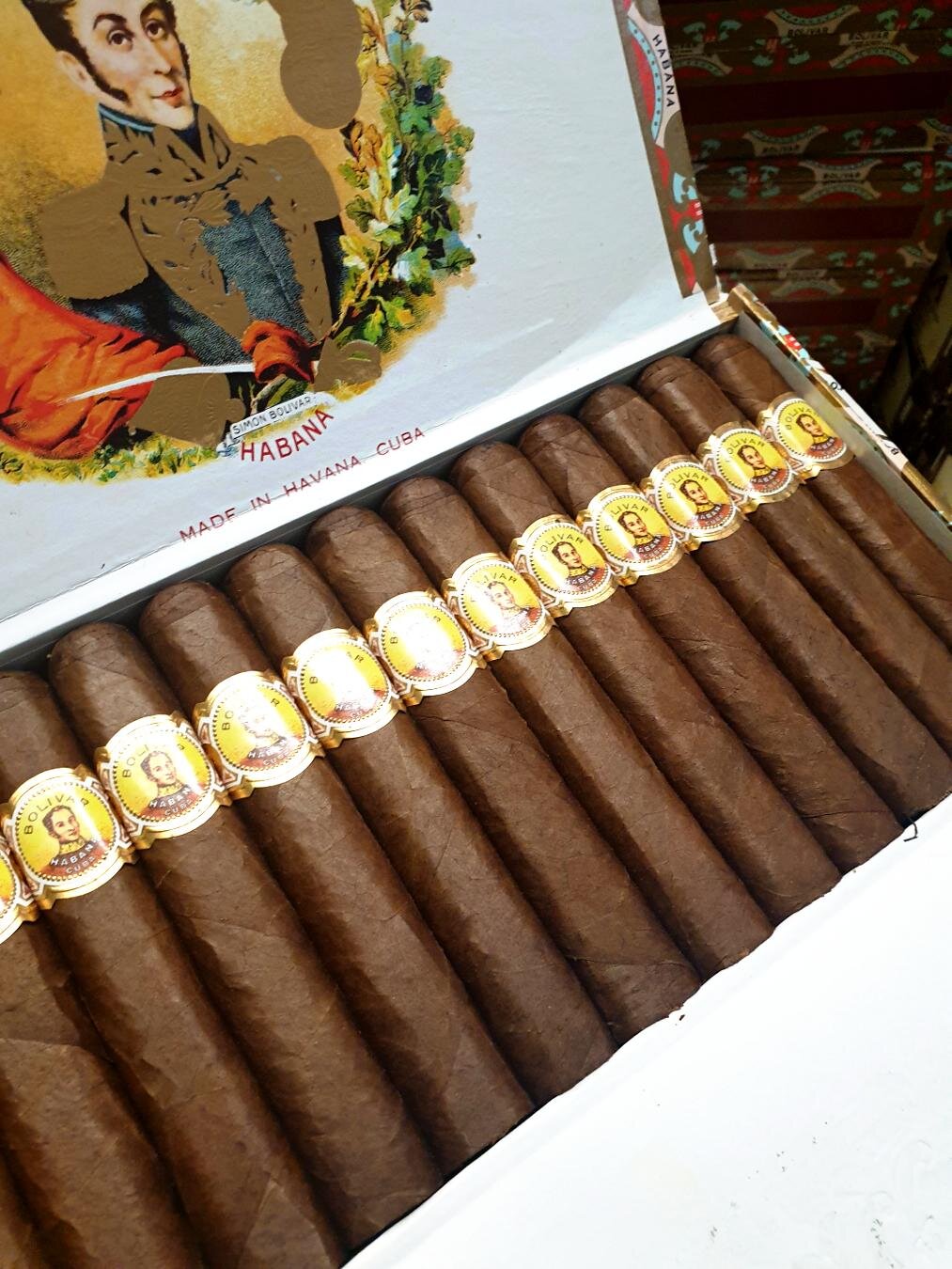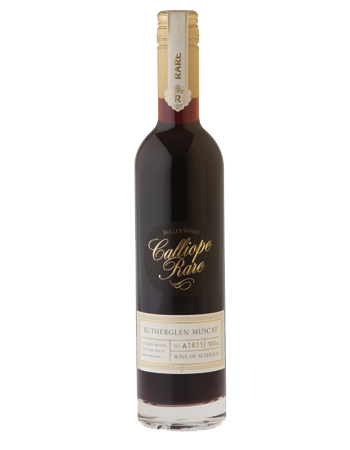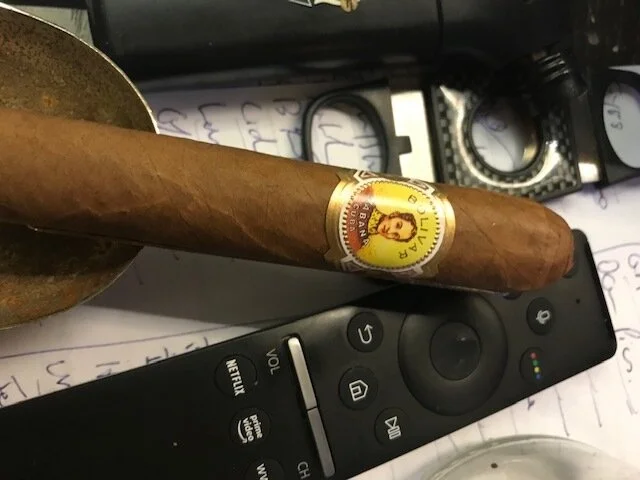Bolivar Royal Corona - Buller’s Calliope Rare Muscat
Sometimes, you just know it is not going to be your week.
Had to duck into my GP. I have the best GP in the world but he does tend to view time as a somewhat flexible construct (my appointment was for 9. He opens at 8.30 but these days of phone consultations, the 8.30 went in at 9.10 and I went in at 10 and a long queue forming). And I was only there because his idiot temp receptionist insisted I come in for my cholesterol prescription and that I simply could not collect it – waste of time. But I digress.
I step into the waiting room and what is he playing? Dylan's ‘Knocking on Heaven’s Door’.
I mean, seriously? And I was twenty years younger than the rest of his patients.
Anyway, happy new year to all and nice to be back with Kenfessions.
The week already had issues. I was supposed to be doing the Australian Organics Wine Show judging Monday and Tuesday – we managed to get it all done Monday, which was a plus. But they decided to do it at the City Winery Bar in the middle of the CBD, starting at 9am and with no parking – we just have to go out and keep finding new spots at parking meters through the day. Sounds like a nightmare. So I get up at the proverbial sparrow’s and drive in.
And there, directly opposite the place is a four hour meter. Score! But it is only 7am so I’ll waste two hours before we start and it all sounds too difficult. I decide I’ll go off and find a parking building. I had checked and nothing within a kilometre of this place. But lo and behold, I find one around the corner. Drive in. Down the ramp. Gate won’t open. Queue forms behind me. This is peak hour in the city on the Monday morning everyone is returning from holidays and so everyone is in a filthy mood. The queue grows.
I get out and try to explain to the bloke behind me the problem. Whoops. Turns out that the tiny print (why the hell have something like this is small print?) says that it is public parking only on weekends. It is for the businesses in the building during the week and only if you have a special card.
Oh crap. Okay, I now need to get the entire queue to back up out of the ramp and then out of the building, back into the streets, so I can reverse and get out. Did I mention it was peak hour on Monday morning, first day back from hols? Oh, what fun that was. There was much contrition.
So, finally having extricated myself from this, parking meters are looking good. I go back to the bar and my original spot is still there. Woo-hoo. And the car in front of me grabs it. Of course they did.
Eventually find another. Still time to kill. Go for a walk. This is real manbun, earphones and lycra territory. Decide on a coffee. Apparently that will be six bucks and you can drink it standing in the Queensland sun, thanks to Covid. Bugger that.
Arrive sweating and grumbling. One of the other judges works in a nearby hotel. A few taps on her computer and I have secure, ridiculously cheap, parking for the day. If only I had known.
Anyway, we had a good day’s judging. Get home, having avoided all emails, internet and mobile phones for the entire day so I can watch the NFL replays. But I really needed a cigar.
Rob had kindly left some for Kenfessions so I grabbed one at random, not something I usually do. The Bolivar Coronas. Robusto sized, 50x124mm. Originally released 1969 according to Trevor’s amazing site. What was interesting was that these are apparently the same cigar as the Boli Prince Charles. Eventually the Prince Charles were discontinued, proving to be less hardy than the current Prince Charles from the Royal Family.
The cigar was a bit ragged with a slightly torn wrapper. I'm sure it would have put many off, but that would have been a shame. The cigar was a cracker. Opened with rich chocolate and earthy notes. Powerful but it had good balance. Big and bold but soft and cuddly. Nothing harsh here. Seamless, full of flavour. Liked it a lot.
And the match was a magic one. The Buller’s Calliope Rare Muscat. Stunning stuff but so rich and decadent and sweet that it could match the cigar. Not much can hold its own with a Boli but this Muscat more than did.
For those not familiar with Rutherglen Muscat, may I plagiarise myself from a recent piece in Quill and Pad. I have several of these great muscats lined up for cigars in the coming days so I might save you from the entire thing in one giant blob. Hence, part one of Rutherglen Muscat. But first, the inevitable digression.
I did the piece because a little while ago, at a “bring the bottle you would want to drink if we all get through COVID” lunch held by a local wine group, a friend tossed in a bonus at the end of the day. We knew it was a fortified wine, but no other information was offered.
For me (and I assure you that it is very rare that I can pick something quite so confidently), even though I had not tried the wine for several decades, it was instantly identifiable. Unmistakable. An old Baileys Muscat (turned out to be a 1963, which I did not pick nor did I even know they did vintage Muscats back then).
Not long after I first got excited by wine, I had travelled down to Victoria to catch up with some friends during the university holidays. One had arranged for a few of us to travel up into Victorian grazing country to stay with his friends for a few days. These days with Covid, one can hardly even consider traveling to Victoria.
We were to stay, I was told, on my mate’s friend’s parents’ property. Unfortunately, my mate’s friend had not provided all the info that might have been useful. We each turned up with what we in Australia call a slab of beer (basically a carton of 24 cans of one’s preferred brew), as that was what one did when visiting other students, although I'm not sure that all of them survived the trip (actually, two of us tripped over the empties getting out of the car and fell flat on our faces in front of the welcoming committee – his folks). Dress was beer-stained student casual. Whoops.
Turns out our friend had failed to advise us that this was not your typical few days with student buddies, but rather a very formal invitation to stay with the friend’s parents and with a dinner that was anything but casual (think eighteenth-century British aristocracy and you are getting close).
The property was truly breathtaking. Turned out that one of their neighbours, on a far less impressive spread, was the then prime minister. I’ll never forget that several rooms had Persian carpets in them that were the size of tennis courts.
Forgive all that preamble. It all leads to the formal dinner, where several of us were woefully underdressed. At the finish, we were each served a small glass of fortified. Everything had been a bit special and I had hopes we might be on the right end of a cracking port. No such luck. A Muscat.
I’ll confess that I knew nothing at all about Muscat, other than that it was what was enjoyed by those who resided under bridges, or so I thought. I was pretty sure that this must be a mistake and that I must have misheard. No. Out came the Muscat. I knew I was certain to be deeply disappointed. Not for the first, nor last, time I could hardly have been more wrong.
I remember it as though it was yesterday. The aroma from this small glass was the most alluring, enticing, extraordinary thing I had ever smelled in my life. Indeed, the nose of a great Muscat is for me one of the three great aromas one can find in the world of wine – the other two are that of a first-class, mature champagne and of a great Burgundy.
The Muscat was the Baileys HJT Muscat. HJT were the initials of the winemaker, Harry Tinson, who made some legendary fortifieds in the 1970s and '80s. Although HJT was technically a different wine to the 1963, the similarities were incredibly strong. I have never forgotten that HJT; indeed I managed to buy one or two back then at the outrageous sum of $5 a bottle.
A confession: technically, Baileys is from Glenrowan, not Rutherglen, though they are close (some may feel that this is a bit like saying Chablis is close to Montrachet) and located in northeast Victoria. And very similar in style. Glenrowan is more famous as the home of Australia’s most legendary bushranger, Ned Kelly, and his gang.
So to Rutherglen. This, as mentioned, is a wine region in the northeast of Victoria, the small state found nestled in the southeast corner of mainland Australia. Around three hours north of Melbourne, Rutherglen is close to the New South Wales border.
Once home to larger producers, it is now represented by small, multigenerational families, some now sixth or seventh generation, producing a range of table wines and some truly unique and extraordinary fortifieds.
The table wines? In fairness, some perfectly decent offerings, usually bold reds – including a number of examples of Durif – or complex whites, but they rarely set the world on fire. It is the fortifieds that thrill. These are the ultimate decadence in a bottle.
The region began back in the 1850s/1860s, though at the time the gold was in the ground, not on the vine. But wines for the hopeful miners was a thriving business. When phylloxera wiped out numerous Victorian wine regions in the 1890’s, Rutherglen could have been lost for all time, but the local community banded together and held strong, ensuring that wine-growing remained an important industry for the region. At that time, it was home to some of the largest wine estates in the world. No longer. While table wines are important to the producers, the fame comes from the fortifieds.
The unique combination of high altitude (Rutherglen is in what is known as the Victorian high country), soils (as a generalisation, fine sandy loam, red loam over clay – the locals call this Rutherglen loam – and bands of shale and quartz), climate and varieties, together with the skills of local blenders and the amazing stocks of old material which has built up over decades is what allows this region to produce wines others can’t even imagine.
This is a region that can see warm to hot days with searing summer temperatures and yet often very chilly nights and cold winters. Autumn tends to be dry, important to prevent any disease sneaking into the bunches. This is basically a continental climate, allowing for slow and even ripening and for the bunches to hang on the vines for lengthy periods, building flavours.
The first vines planted in the region went into the ground in 1851 thanks to John Lindsay Brown at Gooramadda (Browns Plains), who got cuttings from the German growers at Albury. Brown was famous for the instructions to his fellow vignerons, “Dig, gentlemen, dig, but no further than six inches, for there is more gold to be found in the first six inches than further below.”
In 1859, George Morris established the Fairfield vineyard and winery. It was to become one of the country’s biggest producers and the genesis of the Morris clan (in 1885, it was the largest producer in the southern hemisphere). Today, David Morris runs the operation, Morris Wines, although ownership is now out of family hands.
After gold was discovered in 1860 (it had been discovered nearby a decade earlier), James Scott planted vines at St Leonards and established a hotel to sell his wines. He sought the most modern technology for the day, but it was George Sutherland Smith and John Banks of All Saints fame, who built the nearby All Saints Castle, which made the more impressive impact. Their Great Hall was the largest wine storage facility to be found in the southern hemisphere at the time. Numerous other producers followed.
By 1884, Rutherglen was the largest wine-producing region in Victoria with around 3,000 acres under vine across 50 vineyards and 1,870 people working in the local industry. It was producing one-third of all Australian wine. After the phylloxera infestation of the 1890’s, a program of grafting vines to resistant rootlings began and over the next 30 years, more than five million were planted, re-establishing the region to something like its earlier prominence.
By 1925, the region had expanded to around 7,000 acres. Australia was exporting approximately 750,000 gallons (around 2,840,000 litres) of wine a year to England. Most of it was coming from Rutherglen.
What is often forgotten, in these days when fortifieds are so often nothing more than a curiosity, is that until the 1970s Australian wine consumers drank more fortifieds than they did table wines.
In 1950, fortifieds still made for 86 percent of all wine production in Australia (these days, they make up about two percent of the market). British tastes, the key export market, as well as local preferences ensured that fortifieds were in high demand. So it made perfect sense for any region that could excel at fortifieds to do so.
Rutherglen was one such area. Its Muscats, Tokays (as they were known then), and Tawny Ports were popular at home and abroad. In those days, most regions offered vintage ports but aside from a few from producers like Hardy's and Chateau Reynella, they were little more than big, rich, sweet, alcoholic reds.
Over the next few decades, the region became one of small family wineries. As the interest in fortifieds declined – the rise of table wines partly inspired by the immigrant community gravitating to enjoying a bottle of wine with dinner and providing the example to the rest of the country, the issues of drunk driving and more – they were forced to accept that the glory days had gone. Those who have persisted have done so through hard work and quality wines, most especially those extraordinary fortifieds.
More on Muscat to follow.
Buller has a much longer history, celebrating its centenary this year. Its famous Calliope Vineyard is named after the surviving ship from the 1889 Great Hurricane of Samoa, told in verse by one of Australia’s legendary poets, Banjo Patterson: “Ballad of the Calliope.” This small country winery made headlines when the high-profile American wine critic Robert Parker gave a couple of 100-point scores for its fortifieds.
Again, a solera system is used, but only small quantities are made – never more than 1,000 bottles in total of Rare Muscat and Topaque. The base of the wines used for Rare Muscat comes from components originally laid down in the 1940s, freshened up with some more recent material.
Buller’s Calliope Rare Muscat ($250). Colour is more burgundy/maroon. This is seriously complex and exhibits what is obviously old material, beautifully balanced with a touch of freshness. Stunning stuff. Lifted aromas, grilled nuts, stone fruits, raisins, dates, honey, fragrant florals, molasses. Like plum pudding. A wine that dances but also has some serious weight. So concentrated and complex. A wonderful fortified – they don't get much better. 98.
Knocking on heaven’s door, indeed!
KBG







